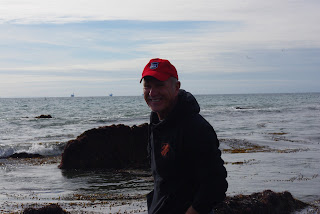Many times I've seen discussions about the usefulness of reading "classics." Some argue they only turn kids off from reading, and that a better choice would be current novels like
Harry Potter or
The Hunger Games. Others argue they are important for reasons such as their expert use of language, or the themes they explore, or the culture and history they represent, etc. I don't know if kids today would like it, but I enjoyed
The Good Earth by Pearl S. Buck, and thought it was an interesting insight into a foreign culture. (I was never assigned to read it in school, but I see a lot of used copies at the library bookstore, so some local teacher must be assigning it.)

It was originally published in 1931, and exposed Americans to the Chinese and may have even created sympathy for China when it was soon afterward invaded by Japan. But according to my friend Nate M., who is very familiar with modern-day China, there's a big difference between rural and urban China, and presumably this is a reasonably accurate portrait of
rural customs, attitudes, and lives in the early 1900s.
The Good Earth tells the story of Wang Lung (it was pronounced "Wan Loong" in the audio version read by Anthony Heald), a poor Chinese farmer, beginning with his marriage to O-Lan, a slave in the House of Hwang, who is not pretty but is especially hard-working. (I was reminded of the song that says "If you want to be happy for the rest of your life...") Together they work the land and begin to raise a family, and through their industry Wang Lung is able to buy land from O-Lan's former masters, who are in decline due to excessive spending and opium use. In times of unusual hardship, such as during a famine when they flee south with other refugees, Wang Lung's work ethic and O-Lan's resourcefulness see them through, and when they return they are able to buy even more land. By the end of the book, Wang Lung becomes more and more like Hwang, both in wealth and in vices.
I found the portrayal of family life especially interesting. Wang Lung and O-Lan do not share a
romantic love for each other, and their relationship with their children is different from Western culture. The relationships instead are
multigenerational, even extending to the dead. Wang Lung reveres and supports his father in his old age, and treats his uncle the same even though it is done unwillingly as the uncle is manipulative and parasitically abuses the family ties. Children don't even seem to have names beyond Eldest son, etc., until they are sent to school. Two relationships were most interesting to me. First is Wang Lung's with his oldest daughter, called the Poor Fool, who becomes mentally retarded due to malnutrition during the famine. Although she is a burden and consideration is given to selling her as a slave to a wealthy home, seeing her smile softens his heart, and he protects and cares for her throughout his life.
The other is his relationship with O-Lan, and it exposes many of the poor attitudes toward women, who are seen merely as chattel and called "slaves." Wang Lung secretly respects and admires O-Lan for her incredible tolerance for hard work and competence and frugality. But while he inwardly takes pride in her abilities, he never asks about her background or servitude. Later, when he has achieved a measure of wealth and selfishly takes a concubine, he regrets the hurt he has caused O-Lan but never acknowledges it. I was also bothered by the references to foot-binding among the upper classes, and the handicap it caused women.
But the progression from poor farmer to wealthy landowner was also interesting. Wang Lung's sons become like the sons of Hwang. In contrast to Wang Lung's poor beginnings, they are blessed with an education. But they do not appreciate the land and its importance as does their father, not knowing the value of the land nor how to work it. They marry into wealthy families with demanding wives who insist upon physical comfort - very much in contrast to their self-sacrificing mother. And while some parts of the book became extremely annoying (such as the bickering between the many women), I was surprised at how much I enjoyed the story. Although happiness was never a constant in any of their lives, it was an interesting and thought-provoking read.




























